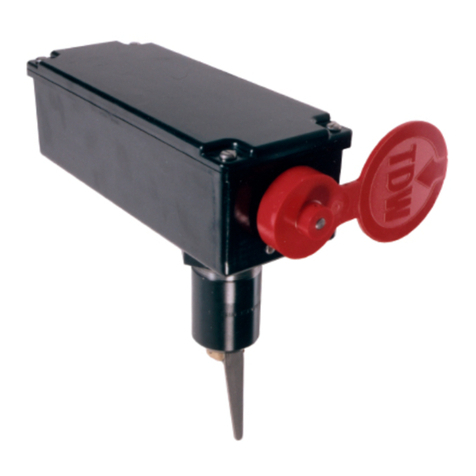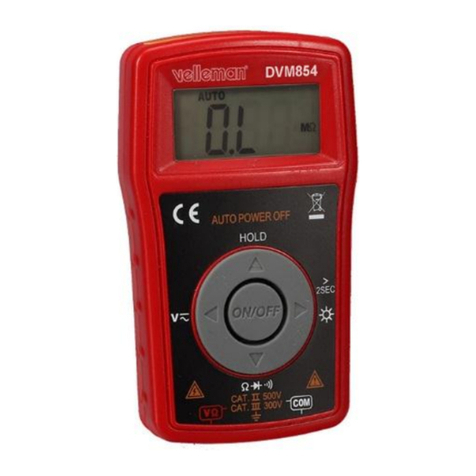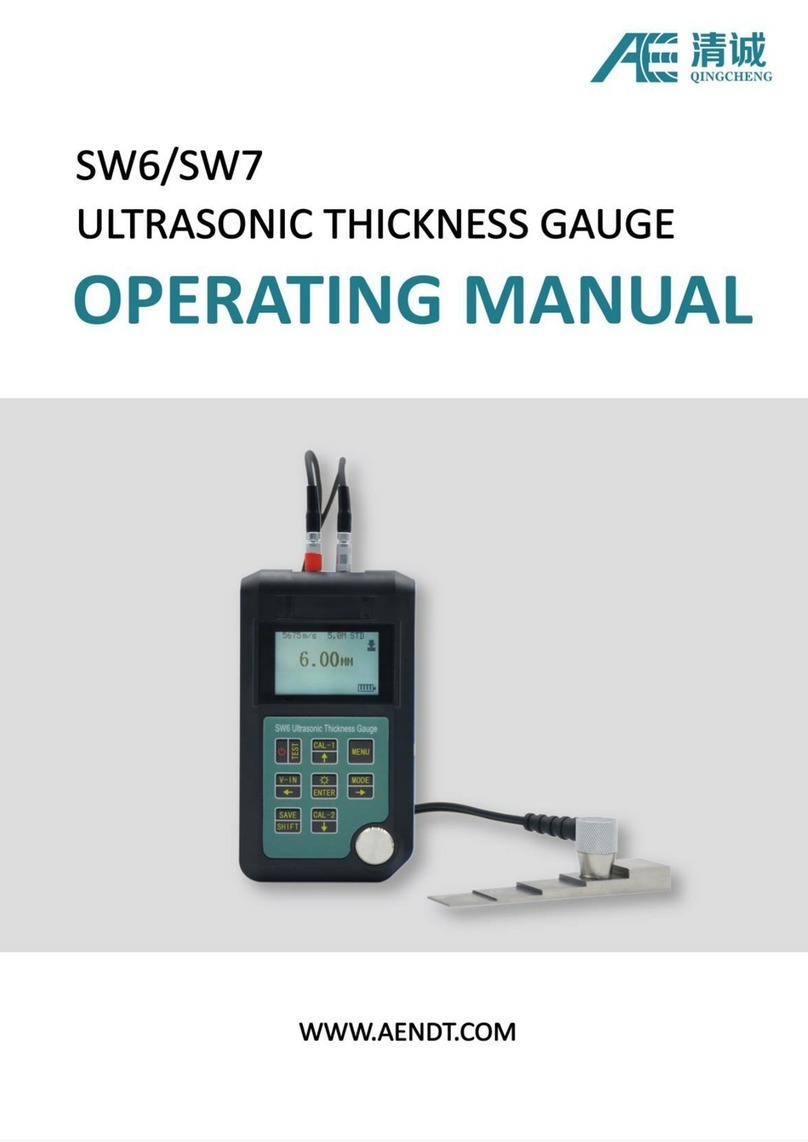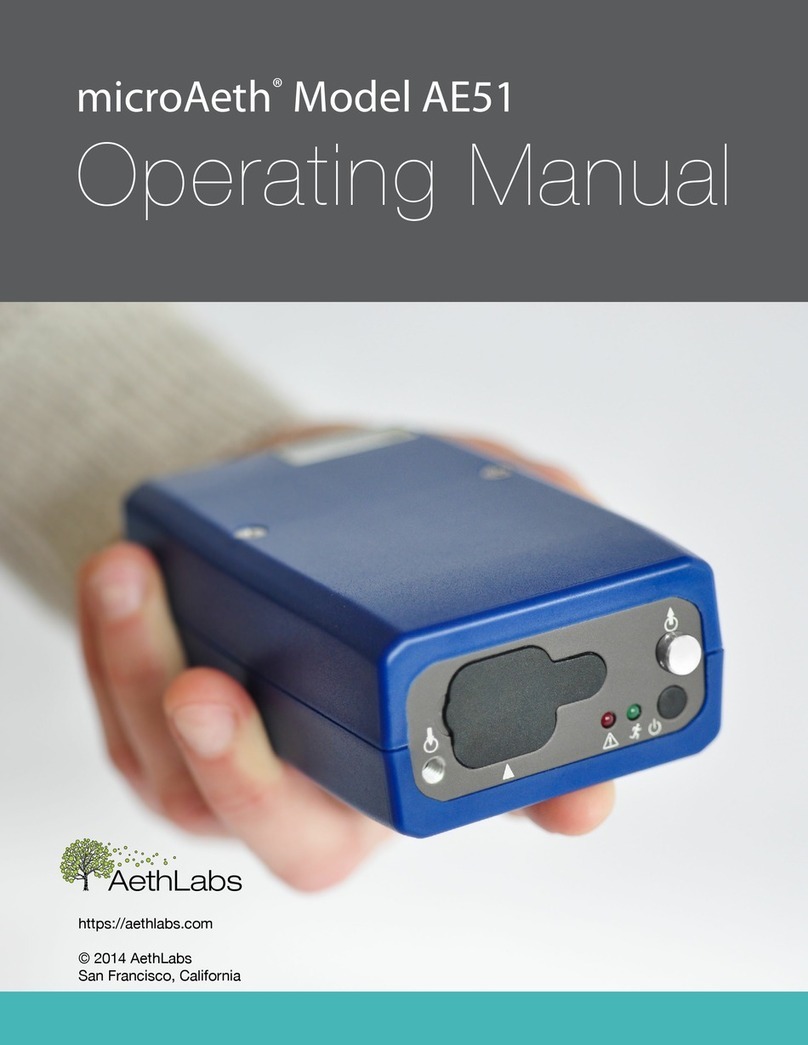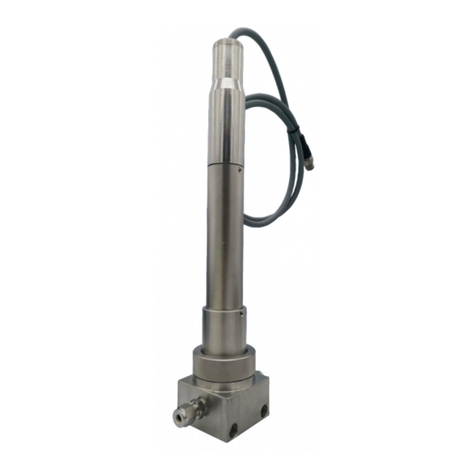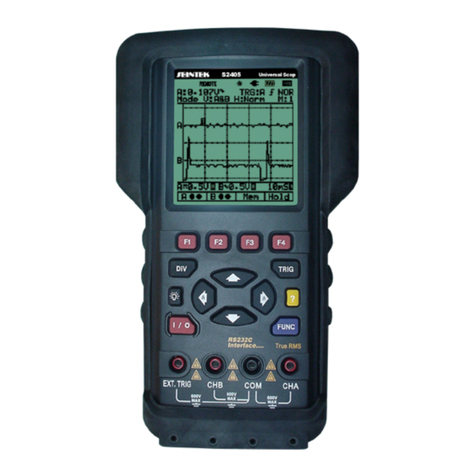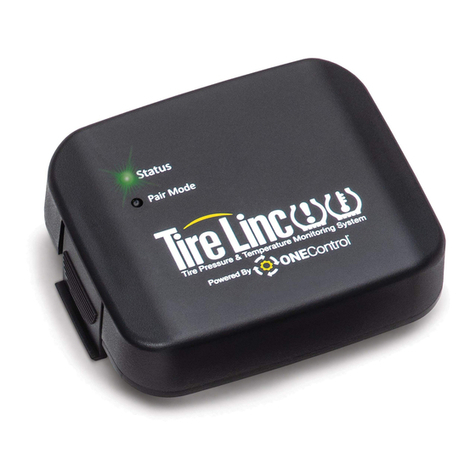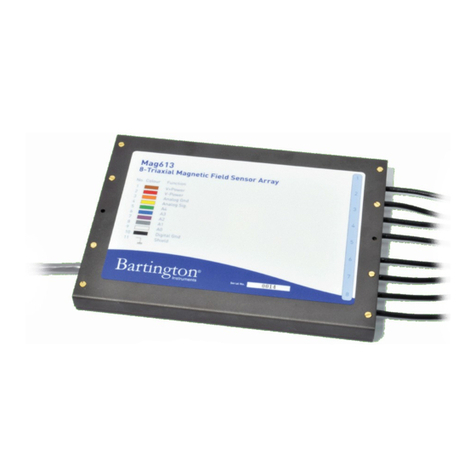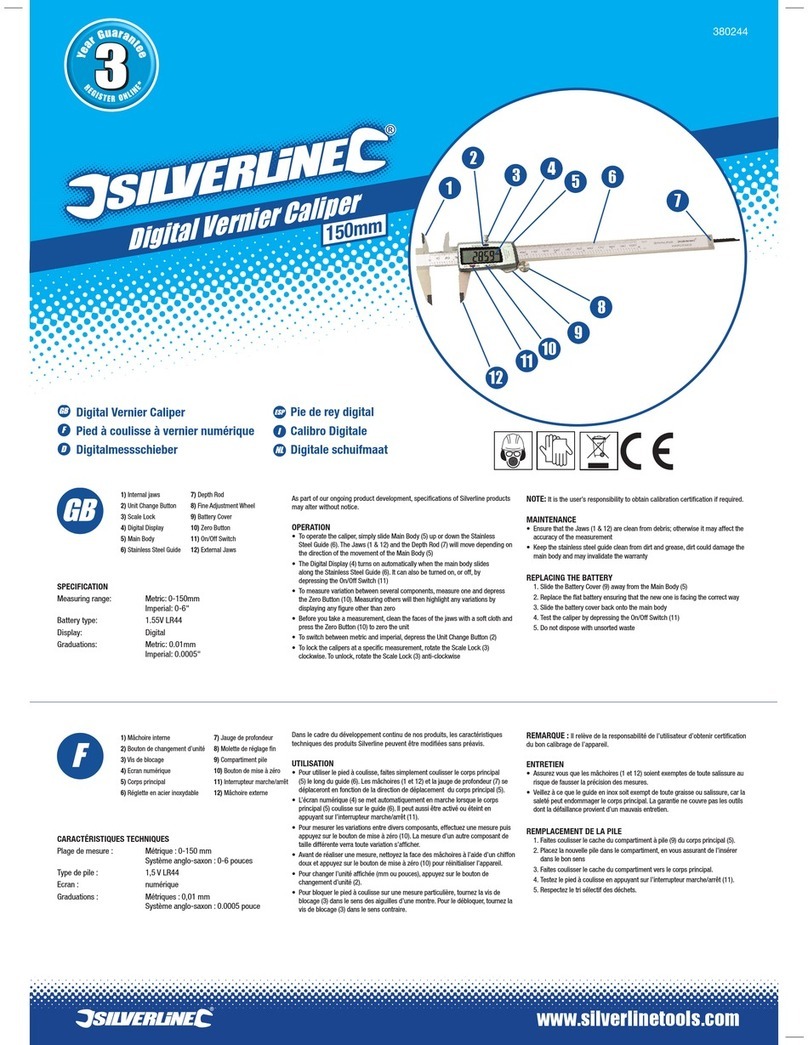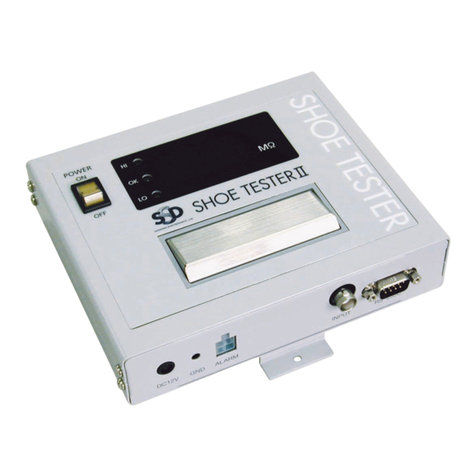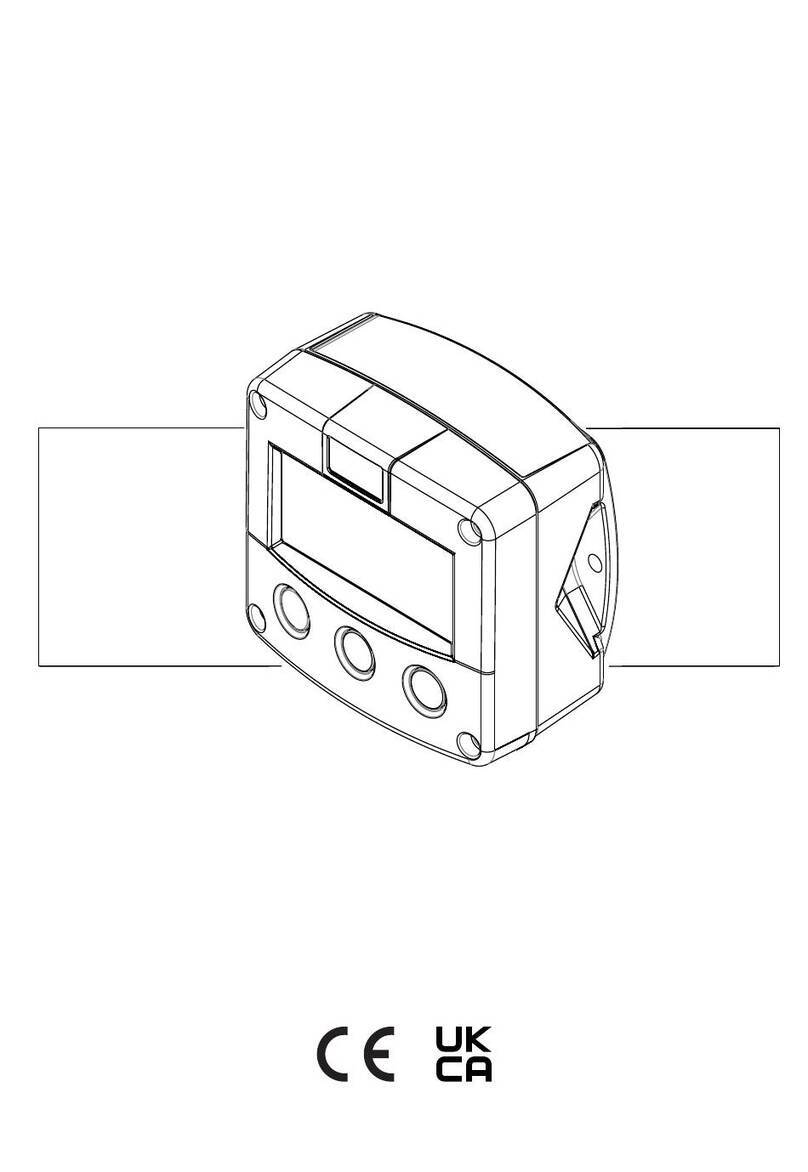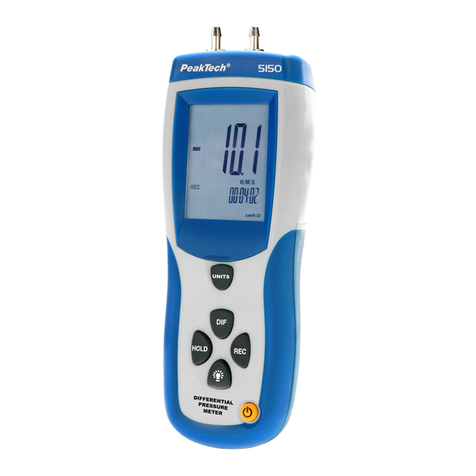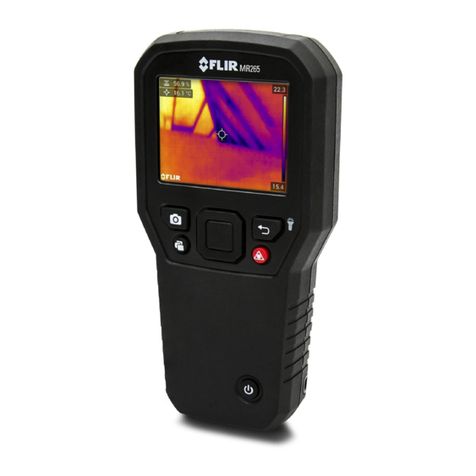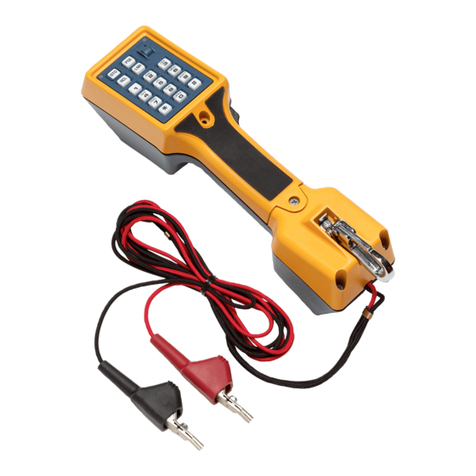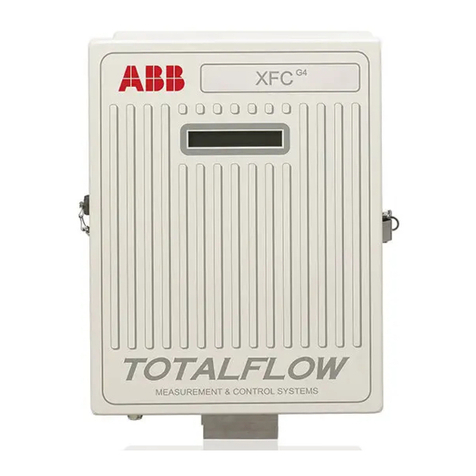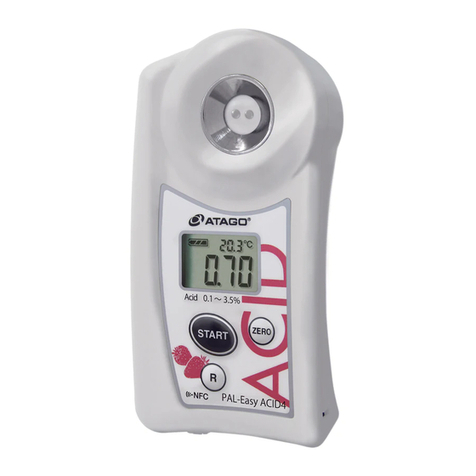TDW PIG-SIG V Manual

00-3795-0384 |January 2018
Operating and Maintenance Instructions
PIG-SIG®V
Scraper Passage Indicator

©2018All rights reserved T.D. Williamson, Inc.
Notice Any operation involving work on pipe containing
liquids or gases under pressure is potentially
hazardous. Itisnecessary, therefore, that correct
procedures be followed in the use of this equipment
to maintain a safe working environment.
No person should use this equipment who is not fully
trained in the procedures stated in this manual, and
who is not fully aware of the potential hazards
connected with work on pipe containing liquids or
gases under pressure.
The purchaser of this equipment isresponsible for
the manner in which this equipment isused and the
training and competence of the operators.
Should any difficulty arise at anytime in the use of
this equipment, please contact T.D. Williamson
immediately. Failure by any person to follow the
procedures and instructions, including all warnings
and cautions, provided in this manual shall void any
T.D. Williamson Product Warranty provided herein.
For Parts and Service:
P.O. Box 3409, Tulsa,OK74101- 3409 USA
In the U.S. toll free 1-888-TDWmSon (839-6766)
Phone (918) 447-5100
Fax (918) 446-6327
E-mail: contact@tdwilliamson.com
Explore the TDW Web site at www.tdwilliamson.com.
™Trademark of T.D. Williamson, Inc. in the United States and foreign countries.
®Registered trademark of T.D. Williamson, Inc. in the United States and foreign
country.
Copyright

©2018All rights reserved T.D. Williamson, Inc.
The list below shows the complete revision history of this document
Date
Version
02/2013
Document Release
12/2014
E005298
Document Version History
01/2018 Revision to Pg 62 Language

©2018 All rights reserved T.D. Williamson, Inc. i
Section I: Safety
1.0 Safety................................................................ 1
Section II: Introduction
1.0 Purpose............................................................. 3
2.0 Description ........................................................ 3
Section III: Pipeline Not Under Pressure
1.0 Installation Overview and Preparation ............ 16
2.0 Plug Installation: Flange- or Valve-Mounted.. 19
Section IV: Pipeline Under Pressure
1.0 THREAD-O-RING™ Nipple Installation.......... 22
2.0 Indicator Installation ........................................ 27
3.0 Plug Recovery................................................. 42
Section V: Indicator Installation
1.0 Indicator Installation ....................................... 53
Section VI: Optional Features
1.0 Optional Features ........................................... 55
Section VII: Maintenance
1.0 Preventative Maintenance .............................. 57
2.0 Troubleshooting .............................................. 63
Section VIII: Application Guide
1.0 Recommended Applications ........................... 67
Table of Contents

©2018All rights reserved T.D. Williamson, Inc. ii
This page intentionally left blank.

1
Section I – Safety
1.0 Safety 1.0 SAFETY
Throughout this publication, “Dangers,” “Warnings”
and “Cautions” (accompanied by the International ⚠)
are used to alert the customer to special instructions
concerning a particular service or operation that may
be hazardous if performed incorrectly or carelessly.
OBSERVE THEM CAREFULLY!
⚠WARNING
WARNING – Hazards or unsafe practices which
COULD result in severe personal injury or death
and damage to the equipment.
⚠CAUTION
CAUTION – Hazards or unsafe practices which
could result in minor personal injury or product or
property damage.
1.1 General
Ensure the safety features and operating procedures
of the drilling machine are understood. Do not
attempt to make a tap or set a PIG-SIG®V plug
assembly without having a complete understanding
of the drilling machine and of the precautions of
working on pressurized lines.
1.2 Personal Protective Equipment and Protective
Clothing
Protective clothing is recommended whenever
working around machinery. Suggestions are: hard
hat, gloves, safety goggles, safety shoes, garments
to cover exposed areas of skin, hearing protection,
and the appropriate breathing apparatus when the
potential for toxic atmosphere exists.
⚠DANGER
DANGER – Immediate hazards which WILL
result in severe personal injury or death.

2
Section I – Safety
This page intentionally left blank.

3
Section II – Introduction
1.0 Purpose
2.0 Description
1.0 PURPOSE
This manual is designed to provide the operator with
factory recommended operation and maintenance
instructions for safe and effective use of the TDW
PIG-SIG V Scraper Passage Indicator.
Read the entire manual for instructions on
installation, operation, and preventative maintenance
for the PIG-SIG V:
•On a plug assembly already set in a pipeline.
•On a line under pressure.
•On a line not under pressure.
2.0 DESCRIPTION
The TDW Scraper Passage Indicator is a device that
is installed on a pipeline to detect the passage of a
pig or sphere.
The PIG-SIG V indicator has a trigger that extends
into the pipeline through a welded fitting that has
been tapped. When a pig passes, the trigger is
tripped, activating the signaling mechanism.
Signaling mechanisms available include a flag
indicator, electrical indicator, and a combination flag
and electrical indicator. PIG-SIG V indicators are
interchangeable with all PIG-SIG indicators now in
the field. This makes it possible to use these units as
conversion kits as well as complete PIG-SIG
indicators. The PIG-SIG V indicator is weather-proof,
corrosion-resistant and the flag indicator offers high
visibility. All parts of the standard PIG-SIG V
construction are manufactured from stainless steel.

4
Section II – Introduction
2.0 Continued The PIG-SIG V Plug Assembly can be installed on or
removed from a pressure pipeline using a TDW T-
101 series Drilling Machine and accessories. In some
cases, a T-101 XL drilling machine may be required.
This manual addresses the T-101b and T-101b XL.
The PIG-SIG V indicator is available in various
combinations of operation, indication and materials of
construction, depending on piping requirements
including:
•All PIG-SIG V units are omni-dimensional.
•Flag indicator with manual reset flag (see Table
1).
•Electrical indicator with auto reset (see Table
2).
•Combination electrical auto reset with manual
reset flag indicator (see Table 3).
•Indicator extensions from one to ten feet.
•Flanged mounting.
•Because of stainless steel construction, any
model is suitable for environmentally harsh
conditions.
Table 1 shows the components of the manual reset
flag indicator model. Table 2 shows the components
of the electrical indicator with auto reset. Table 3
shows the components of the combination model
featuring electrical auto reset with manual reset flag
indicator.

5
Section II – Introduction
Table 1. PIG-SIG V Flag Indicator With Manual-Reset Flag
Flag Indicator
Assembly Cap Plug Assembly THREAD-O-RING
Nipple
Set Screws and
Allen Wrench
PTFE Grease
Lubricant (Anti-Seize)
Silicon Grease
Lubricant

6
Section II – Introduction
Table 2. PIG-SIG V Electrical Indicator With Auto Reset
Electrical Indicator
Assembly Cap Plug Assembly THREAD-O-RING
Nipple
Set Screws and Allen
Wrench
PTFE Grease
Lubricant (Anti-Seize)
Silicon Grease
Lubricant

7
Section II – Introduction
Table 3. PIG-SIG V Combination Electrical Auto Reset
with Manual Reset Flag Indicator
Electrical Indicator
Assembly Cap Plug Assembly THREAD-O-RING
Nipple
Set Screws and Allen
Wrench
PTFE Grease
Lubricant (Anti-Seize)
Silicon Grease
Lubricant

8
Section II – Introduction
2.0 Continued Within each type, the PIG-SIG V indicator is available
in a number of variations, including such options as
O-ring material and material used in plug
construction. A number of extension lengths up to 10
feet are available to elevate the indicator.
The PIG-SIG V indicator can be installed on a line
under pressure, without taking the line out of service,
using the TDW T-101, T-101a or T-101b (or XL
versions) drilling machine.
2.1 Specifications
A. THREAD-O-RING Nipple (Figure 2.1). For
material specifications and pressure-temperature
ratings, refer to Table 4 and Table 5.
Figure 2.1 THREAD-O-RING Nipple

9
Section II – Introduction
B. THREAD-O-RING-Nipple Material. (Refer to Table 4.)
Table 4. THREAD-O-RING Material Specifications
Size and
Grade
2 NPS XXS, ASTM A 333 Grade 6 seamless steel
pipe
Tensile
Requirements
35,000 psi SMYS – 60,000 psi SMYS
Impact
Requirements
13 ft.-lb. min. Avg. 3 Specimens
10 ft.-lb. min. One Specimen Only
Impact Temperature: 50° F
Chemical
Requirements
Composition Percentage:
Carbon: 0.30 max
Manganese: 0.29–1.06
Phosphorus: 0.025 max
Sulfur: 0.025 max
Silicon: 0.10 min
Test Report
Certified test reports furnished per ASTM A 530

10
Section II – Introduction
C. Pressure-Temperature Ratings (for Design Factor F). (Refer to Table
5.)
Table 5. Pressure-Temperature Ratings for PIG-SIG V THREAD-O-
RING Nipple*
†
Temp
(° F)
Temp
(° C)
Piping Code
B31.3
B31.4
B31.8
–
F=.72
F=.72
F=.60
F=.50
F=.40
-50
-46
3159
-20 to
250
†
-29 to
121
3743 3743 3120 2600 2080
300†
149
3620
3017
2514
2011
350†
177
3493
2911
2425
1940
400†
204
3369
2808
2340
1872
450†
232
3072
3246
2246
1872
1497
500†
260
2985
* Pressures are in pounds per square inch, gauge (psig). Ratings do not include
allowance for corrosion.
†
Due to magnet degradation, the temperature for the plug assembly is limited to
200
° F (93° C).
NOTE
:
O
-ring material selection must be suitable for service fluids and temperature
requirements.

11
Section II – Introduction
D. Electrical Specifications and Ratings. (Refer to Figure 2.2.)
Figure 2.2. Electrical Indicator Switch Specifications
Electrical ratings (refer to Tables 6-8):
10 amps continuous carry. Circuits on any one pole must be the same
polarity. The BX4CL switch is weather-sealed, explosion proof and
designed specifically for use in hazardous location applications. The
switch enclosure is sealed for protection against corrosion, water, dust,
and oil as defined in NEMA 1, 3, 4, 4X, 6, 7, 9, 13, and IP67 as defined
in IEC 529. The switch enclosure meets the European Hazardous
Locations Designation: EExd IIC T6 category II 2 GD, SIRA 00ATEX
1037X. The switch complies with the European Directive on Equipment
and Protective Systems Indented for us in Potentially Explosive
Atmospheres (94/9/EC) commonly referred to as ATEX Directive.
NOTE
:
When a flag indicator is used in combination with an electrical switch
; the switch
will open or close momentarily when the flag is res
et.

12
Section II – Introduction
Compliance with the Essential Health and Safety Requirements has
been assured by compliance with EN50014 1997 and EN50018 1994.
The switch meets the North American Hazardous Locations
Designations: Class I, Groups B, C, and D; Class II, Groups E, F, and G.
The switch complies with UL (File No. E61730) and CSA (File No.
LR57327). The switch operating temperature range is -40° F (-40° C) to
185° F (85° C). The switch housing is epoxy-coated aluminum and zinc
with fluorosilicone seals. (IEC Standards: Ex dIICT6, IP67)
Table 6. AC Volts – Pilot Duty: 600 VAC, 720 VA
Amps at 0.35 Power Factor
Circuitry
VAC
Make
Break
Double-Pole
Double-Throw
240
15
1.5
480
7.5
0.75
600
6
0.60
Table 7. DC Volts – Pilot Duty: 240 VDC, 30 Watts
Make and Break Amps
Circuitry
VDC
Inductive
Resistive
Double-Pole
Double-Throw
24
10
10
120
0.25
0.8
240
0.15
0.4
Table 8. NEMA Types
Non-Hazardous Locations
Hazardous Locations
1 3 4 4X 6 6P 12 13 7B 7C 7D 9E 9F 9G
•
•
•
•
•
•
•
•
•
•
•
•

13
Section II – Introduction
E. Reference Standards. (Refer to Table 9.)
Non-Hazardous Locations
Type 1 enclosures are intended for indoor use primarily to provide a
degree of protection against contact with the enclosed equipment.
Type 3 enclosures are intended for outdoor use primarily to provide a
degree of protection against windblown dust, rain, sleet, and external ice
formation.
Type 4 enclosures are intended for indoor or outdoor use primarily to
provide a degree of protection against windblown dust and rain,
splashing water and hose-directed water.
Type 4X enclosures are intended for indoor or outdoor use primarily to
provide a degree of protection against corrosion, windblown dust and
rain, splashing water and hose-directed water.
Type 6 enclosures are intended for indoor and outdoor use primarily to
provide a degree of protection against the entry of water during
occasional temporary submersion at a limited depth.
Type 13 enclosures are intended for indoor use primarily to provide a
degree of protection against dust, spraying of water, oil, and non-
corrosive coolant.
Hazardous Locations
Type 7 enclosures are for use indoors in locations classified as Class I,
Groups B, C, or D as defined in the National Electrical Code.
•Group B – Atmospheres containing hydrogen manufactured gas.
•Group C – Atmospheres containing diethyl ether, ethylene, or
cyclopropane.
•Group D – Atmospheres containing gasoline, hexane, butane,
naphtha, propane, acetone, toluene, or isoprene.

14
Section II – Introduction
Type 9 enclosures are for use indoors in locations classified as Class II,
Groups E, F, or G, as defined in the National Electrical Code.
•Group E – Atmospheres containing metal dust.
•Group F – Atmospheres containing carbon back, coal dust, or coke
dust.
•Group G – Atmospheres containing flour, starch, or grain dust.
Table 9. Conforming International Standard
Type of Protection
NEMA
IEC
Rain Tight
Type 3
IP-63
Water Tight
Type 4
IP-65
Submersible
–
IP-67
Oil Tight/Dust Tight
Type 13
–

15
Section III –Pipeline Not Under Pressure
Section III
Overview This section provides instructions for the installation
of the TDW PIG-SIG V Scraper Passage Indicator in
pipelines or pig traps not under pressure and where
there is no product flow.
A THREAD-O-RING nipple may be installed over a
pre-cut opening in the pipe. As an option to installing
the nipple over a pre-cut opening, the opening may
be cut using a drilling machine with a 1-7/16-inch drill
after the nipple has been welded to the pipe. Once a
nipple has been welded to the pipe, it is
recommended that a drilling machine be used to cut
the opening in the pipe wall so that the nipple will act
as a guide and ensure proper alignment. The
opening through the pipe wall must be 1-7/16- to 1-
1/2-inch diameter, and the bore of the nipple must be
coaxial with the hole cut in the pipe to within 1/64-
inch. No part of a THREAD-O-RING nipple may
extend inside the pipe for reinforcement or for any
other purpose. If additional reinforcement is required,
THREAD-O-RING nipples can be provided for
attachment to various types of integrally-reinforced
connections.
If the PIG-SIG V indicator is replacing a PIG-SIG IV
assembly, remove all PIG-SIG IV components.
Table of contents
Other TDW Measuring Instrument manuals
